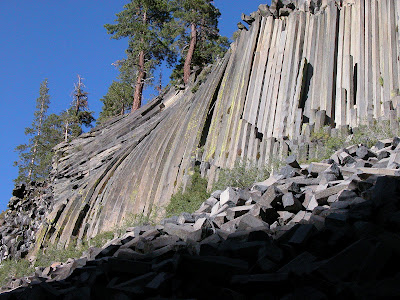WEEKEND GETAWAY IDEAS - from Bay Area
Moss Landing, CA
Moss Landing locates in Monterey County, California, 50 miles of San Jose, 20 miles south of Santa Cruz. It is a great place for a day trip for Bay Area family.
Moss Landing is the pathway to state and federal protected lands, including Moss Landing State Beach, Moss Landing Wildlife Area, and Elkhorn Slough National Estuarine Research Reserve.
Driving Direction From San Jose
 |
| Driving Direction from San Jose to Moss Landing |
Santa Cruz to Moss Landing Map
 |
| Santa Cruz to Moss Landing Map |
First Stop: Moss Landing State Beach
 |
| Moss Landing State Beach Map |
From highway 1, when you see the sign "Moss Landing State Beach", exit out on your right side. Following the sign to the parking area. Walking along the Jetty road, you should see a group of sea utters floating in the water, sea lions resting on the shore, and people kayaking.
 |
| This Sea Utter is a very active one |
This one is comfortably floating on the water.
You can spot some other wild animals here.
Second Stop: North Harbor of Moss Landing
Driving back to Highway 1, exit on your right. The north harbor is the home of Elkhorn Yacht Club, Monterey Bay Kayaks, and Sea Harvest Fish Market & Restaurants.
You can launch your own kayak here or rent it at Monterey Bay Kayaks.
You can launch your own kayak here or rent it at Monterey Bay Kayaks.
 |
| Kayaking at Moss Landing Harbor |
Walk or park your car near the Sea Harvest Fish Market & Restaurants. Mass of sea lions almost on your feet.
 |
| Sea Lion fighting for his space at Moss Landing Harbor |
Third Stop: Elkhorn Slough National Estuarine Research Reserve
Elkhorn Slough National Estuarine Research Reserve
The 1700-acre Reserve is a hub of activity and hosts programs that promote education, research, and conservation in Elkhorn Slough. There are five miles of trails that meander through beautiful oak woodlands, calm tidal creeks, and freshwater marshes. The visitor center offers tours on the weekends and special events throughout the year.
Address and Map to The Visitor Center
1700 Elkhorn Road
Watsonville, CA 95076
Telephone: (831) 728-2822
Watsonville, CA 95076
Telephone: (831) 728-2822
 |
| A couple walking on South Loop Trial |
 |
| You can also Kayak from Harbor to Here |
Lunch Stop: Phil's Fish Market & Eatery
Phil's Fish Market & Eatery
7600 Sandholdt Road, Moss Landing, CA 95039
Thanks for visiting my blog, enjoy your day trip at Moss Landing.
























